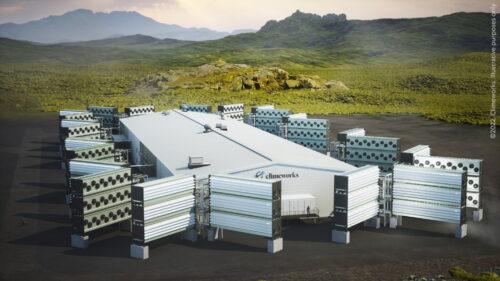
Direct Air Capture and the Energy Transition
Download our new insight brief here.
Although we know we must rapidly decarbonize every sector of the global economy, energy and economic experts increasingly warn that even our best efforts may fall short. Therefore, some degree of nature-based or engineered carbon dioxide removal (CDR) solutions are now widely seen as necessary for removing residual emissions. For engineered solutions such as direct air carbon capture and storage (DACCS), however, there is a growing tension between support for it and a realistic skepticism about a costly and energy-intensive technology that is yet unproven at scale. These tensions are further exacerbated by competing demands among different mitigation and removal solutions, including funding, access to clean energy sources to run DACCS equipment, targeted policy support, and optimal allocation of talent, capital, and attention.
As concluded in our last brief on this topic, public and private investment is needed to test technology pathways, drive down costs, and validate system configurations and business models adapted to different conditions before we can fully assess the potential long-term role of DACCS. But we can look ahead to consider the relationship between DACCS and other climate change mitigation efforts based on a range of possible costs and resource requirements for these technologies. To help frame these issues, our latest brief assesses the potential energy transition implications of gigaton-per-year-scale deployment of one type of DACCS (low-temperature, solid-amine DAC) in terms of energy, materials, investment, natural capital, and key social and political issues.
Although DACCS is currently one of the costliest climate solutions, it may play a role where policies and markets fail to support a least-cost emissions mitigation approach or in those limited cases where near-term abatement options are too challenging or expensive. For example, smaller amounts (<1 GtCO2/y) of CDR could balance out emissions from harder-to-abate sectors such as heavy industry and long-haul aviation. Similarly, some economies may take longer to reduce greenhouse gas emissions in the context of their development goals and various policy, financial, and technology constraints.
Our analysis suggests that rapidly scaling DACCS from 2030 could risk incurring significant energy-transition opportunity costs in terms of economic inputs and political capital. Although a wide range of uncertainties surrounds these conclusions, the pace of DACCS’s required technological improvement in all cases is ambitious. The notion of a one-for-one trade-off between DACCS and the speed of the energy transition oversimplifies a complex and nuanced issue, but policymakers must nonetheless consider how to prioritize public investments and structure market mechanisms to ensure a level playing field and deliver the greatest mitigation impact. This paper puts the potential scale and timing of these costs in perspective and recommends priority areas for research, innovation, messaging, and policy to better understand and mitigate these issues.
Developing innovative CDR options, including DACCS, to expand our portfolio of climate change solutions is not an either-or proposition. We need to continue accelerating the adoption of proven, low-cost mitigation solutions while investing in removal solutions that might backstop potential carbon budget overshoot and other long-term reductions in atmospheric greenhouse gas concentrations.
Photo courtesy of Climeworks